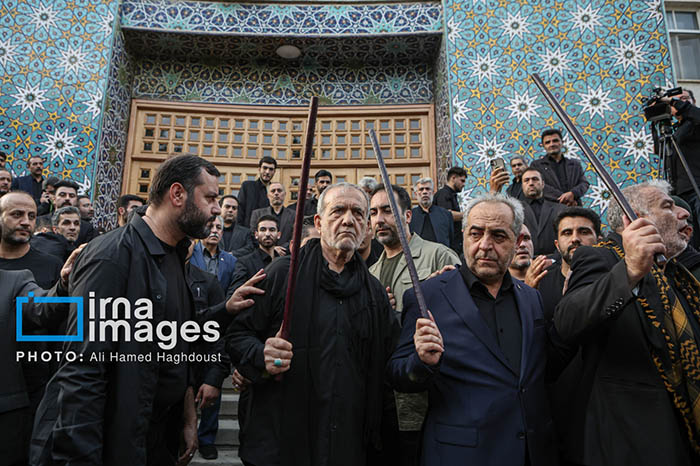The Significance of the 1404 Ceremony
This year’s ceremony was particularly momentous. It was the first Tasua observance held during the presidency of Masoud Pezashkian, who took office amid hopes for greater social cohesion, cultural tolerance, and institutional reforms. Pezashkian’s attendance symbolized a return to local roots and a recognition of the importance of regional traditions in building a more inclusive national identity.
Held within the compound of the East Azerbaijan Governorate, the ceremony was organized with the cooperation of local Hosseini delegations, the Office of Religious Affairs, and volunteer groups from Tabriz and surrounding towns. Black flags adorned the gates of the compound, while the sounds of drums, cymbals, and sorrowful recitations filled the air. Groups of mourners, many dressed in traditional Azeri mourning clothes, formed synchronized processions, each led by a banner bearing the name of Imam Hossein or one of his loyal companions.
The emotional peak of the ceremony came during the collective recitation of the elegy for Hazrat Abolfazl Abbas, the half-brother of Imam Hossein and a symbol of unwavering loyalty. The tears streaming down the faces of young and old alike illustrated the living connection between past and present, between Karbala and modern-day Iran.
President Pezashkian was joined by other dignitaries, including the Governor of East Azerbaijan, prominent clerics from the Tabriz Seminary, and cultural activists from the region. Importantly, the ceremony was not televised as a state broadcast event, but rather streamed through local and digital platforms, reflecting a new approach to religious programming that emphasizes community over spectacle.
